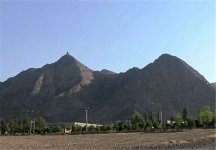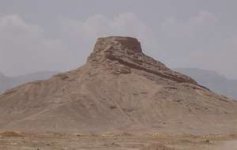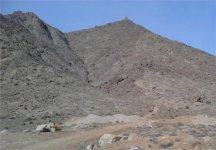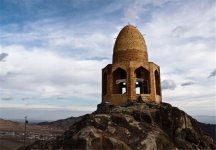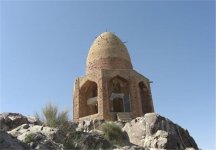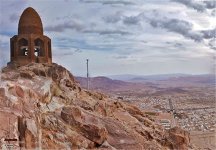Mojtaba19891222
Greenie
Hi there
As you know im new to forum from Iran and get surprised by members welcome
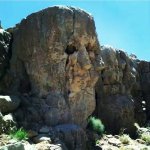
So today im going to share some ancient Persian signs and related understanding (not their exact meaning as im not sure neither others absolutely)
We all know that sign language has two categories: General and specified which is different from place to place, culture to culture, religion to religion and country to country.
General sign language has same meaning in all over the world but other signs maybe have different use and meaning.
Before i get to main content i must say that signs in this forum from Spanish i saw, i really didnt see many of them in our country neither in books (at least my experience) so every civilization has a unique tradition and signs in depth).
A researcher in Iran will face many signs, marks, monuments and even writing. As Iran has a long history and one of oldest empires so i can say its one of the best for researchers.
In this post i will talk about stone Bowls (Drill).
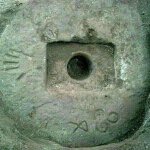
When you find any sign of ancient life some where in Iran and also some neighbours countries you can see bowls which created in stones for sure but what are they? whats their meaning and point?
These bowls call Joghan, Javen and ... are used for many purposes.
They can be used for pouring sacrificed blood in them and putting some herbs in them and burn them for memory of their deads and for marking graves and showing well and springheads and later for powdering things in them as masonry but they have many other uses.
Bowls has many shapes like circle, square, triangle ... and even some weird shapes.
Lets talk about haunting... In this matter deciphering signs is the most hardest part, where to look if i found a bowl or two or many!!!
Circle Bowls:
If you find a circle bowl in a stone you need to look for other signs like a fingerprint near it in the same stone to show you the correct direction. Circle bowls are for an important person, how much they are wide and depth shows the matter that person has when he lived.
There are many cases with one or two (maybe three or more) big circle bowls and other small bowls which says here you will find a family or royal grave, bigger bowl is for father or most important person. Look for direction guide near bowls to find graves place which could be under the bowls to 50 meters away from it but if you look for other signs and find them you can point exact graves places. for example a big bowl and about 10 cm a small sign says in this direction 10 meter or foot.
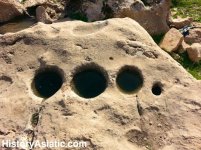
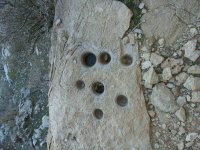
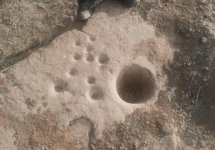
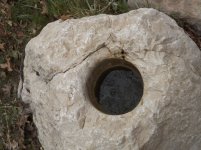
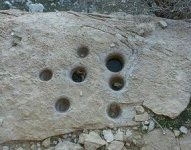
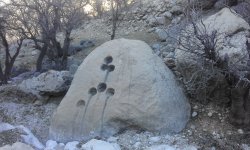
Triangle Bowls: Most of them refer to Yahudi (Jewish) graves or Mummy with treasures. They are well trapped, very very dangerous (from traps to poison gases [and even magical words they say not me] and takes time to get to it but it rewards well. In this case for finding exact place of tomb you need to concentrate on triangle. Generally you should look for high places and mountains. If triangle bowl come with another sign side by side like another bowl you are already at right place. In Isosceles triangles you should look for trails from its height. In Equilateral triangle maybe grave is there and if you can find other sign they will help.
Anyway if you find a triangle bowl look area around it by 30 meters.
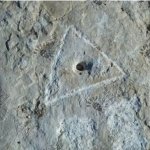
Ellipse Bowls:
They point to a rocky Dakhma (Tower of Silence), a place for bury deads. These graves built on surface of the ground by big rocks and blocking its entrance by a shaped rock. This kind of bowls shows a good loot as it is built many month or even years for a prince or a high priest. They mostly point to a female prince.
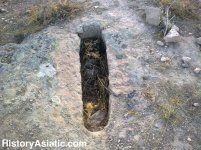
Square Bowls:
They refer to rock Dakhma too but not on the ground! They are on mountains, rocks, in the heart of rocky mountains. The main entrance of Dakhma is very close to square bowls and get blocked by sarooj and it has treasure. These bowls belongs to priests almost.
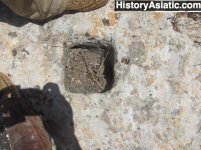
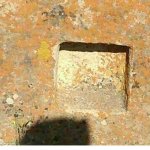
Rectangle Bowls:
It points too land of dead, underground tunnels with many rooms for deads and its really hard to find its entrance which is blocked securely but when you find the ultimate grave you well reward.
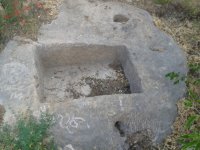
We will talk about other bowls and their meaning in comments.
As you know im new to forum from Iran and get surprised by members welcome

So today im going to share some ancient Persian signs and related understanding (not their exact meaning as im not sure neither others absolutely)
We all know that sign language has two categories: General and specified which is different from place to place, culture to culture, religion to religion and country to country.
General sign language has same meaning in all over the world but other signs maybe have different use and meaning.
Before i get to main content i must say that signs in this forum from Spanish i saw, i really didnt see many of them in our country neither in books (at least my experience) so every civilization has a unique tradition and signs in depth).
A researcher in Iran will face many signs, marks, monuments and even writing. As Iran has a long history and one of oldest empires so i can say its one of the best for researchers.
In this post i will talk about stone Bowls (Drill).

When you find any sign of ancient life some where in Iran and also some neighbours countries you can see bowls which created in stones for sure but what are they? whats their meaning and point?
These bowls call Joghan, Javen and ... are used for many purposes.
They can be used for pouring sacrificed blood in them and putting some herbs in them and burn them for memory of their deads and for marking graves and showing well and springheads and later for powdering things in them as masonry but they have many other uses.
Bowls has many shapes like circle, square, triangle ... and even some weird shapes.
Lets talk about haunting... In this matter deciphering signs is the most hardest part, where to look if i found a bowl or two or many!!!
Circle Bowls:
If you find a circle bowl in a stone you need to look for other signs like a fingerprint near it in the same stone to show you the correct direction. Circle bowls are for an important person, how much they are wide and depth shows the matter that person has when he lived.
There are many cases with one or two (maybe three or more) big circle bowls and other small bowls which says here you will find a family or royal grave, bigger bowl is for father or most important person. Look for direction guide near bowls to find graves place which could be under the bowls to 50 meters away from it but if you look for other signs and find them you can point exact graves places. for example a big bowl and about 10 cm a small sign says in this direction 10 meter or foot.






Triangle Bowls: Most of them refer to Yahudi (Jewish) graves or Mummy with treasures. They are well trapped, very very dangerous (from traps to poison gases [and even magical words they say not me] and takes time to get to it but it rewards well. In this case for finding exact place of tomb you need to concentrate on triangle. Generally you should look for high places and mountains. If triangle bowl come with another sign side by side like another bowl you are already at right place. In Isosceles triangles you should look for trails from its height. In Equilateral triangle maybe grave is there and if you can find other sign they will help.
Anyway if you find a triangle bowl look area around it by 30 meters.

Ellipse Bowls:
They point to a rocky Dakhma (Tower of Silence), a place for bury deads. These graves built on surface of the ground by big rocks and blocking its entrance by a shaped rock. This kind of bowls shows a good loot as it is built many month or even years for a prince or a high priest. They mostly point to a female prince.

Square Bowls:
They refer to rock Dakhma too but not on the ground! They are on mountains, rocks, in the heart of rocky mountains. The main entrance of Dakhma is very close to square bowls and get blocked by sarooj and it has treasure. These bowls belongs to priests almost.


Rectangle Bowls:
It points too land of dead, underground tunnels with many rooms for deads and its really hard to find its entrance which is blocked securely but when you find the ultimate grave you well reward.

We will talk about other bowls and their meaning in comments.
Last edited:


